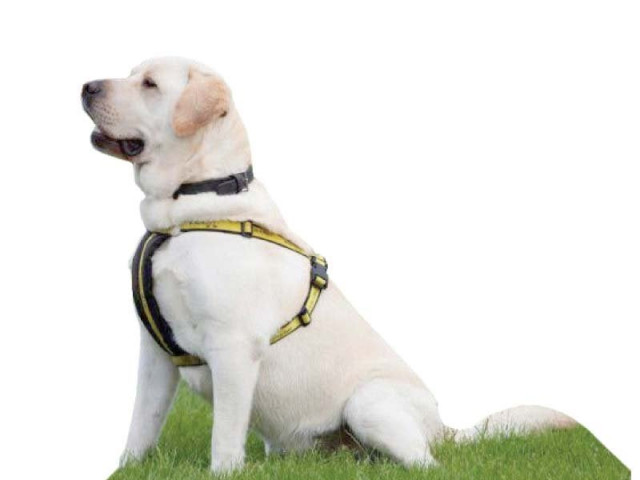All paws on deck: dogs come to the rescue
SSP operations says these animals are crucial in search and sweep activities

The four-legged creatures are now being used by rescue services and law enforcement agencies for a range of objectives from search and sweep operations to detecting bombs and rescuing people trapped under the debris of fallen buildings.
SSP Operations Ismail Kharak tells The Express Tribune that there are more than 350 breeds of dogs which can be used for policing activities. “Their sense of smell and loyalty towards human beings is stronger than any other animal in the world.”
He points out that training plays a big role in the overall behaviour of dogs. The SSP recalls that the pitbull terrier was banned for police use in the US after some dogs of the breed were attacking humans. However, research showed flawed methods in training and the animals were again included in the force after corrective measures were taken.
The officer says dogs are mainly used in three ways. “The first-class is a working dog often known as the sniffer and it used for search and sweep operations. The second class is known as a show dog which is kept in houses as a pet or for security purposes. The third class is a game dog which is raised for dogfights.”
Different classes of dogs are also found in rural areas. The SSP adds that the canines are being used as a weapon in modern policing. “The special branch of the police has eight dogs.”
He adds that Labradors are specially trained by the army to detect drugs, explosive material and weapons. “In urban areas, before the commencement of a religious procession or political gathering, the routes and areas are cleared through search and sweep operations with the help of sniffer dogs.”
The SSP further states that sniffer dogs are deployed to detect the presence of explosive materials or people trapped under debris.
Fahad, a trainer and dog lover, says Labradors and German shepherds are used for detection purposes in the country because they can adapt according to the weather. He maintains that training dogs is not an easy business. “We have to work hard with these dogs. It takes one-and-a-half months for the dog to become familiar with the trainer after which the process starts.”
He elaborates that dogs are taken to the open field where the trainer first demonstrates the action he wants the dog to perform. Fahad explains that at first, dogs are taught to sit, stand up and follow finger movements. He adds that as soon as the dog follows its trainer’s actions, it is immediately rewarded with a treat to encourage positive behaviour.
He says that over time, dogs are taught different behaviours including sniffing out explosive material and drugs after which they are ready for search operations. “Dog training takes six to eight months. The average left expectancy of the dog is nine to 12 years during which they are vaccinated three times.” Fahad adds that various medicines are used for the treatment of dogs including syrups and injections.
Fahad informed that the daily cost of a dog’s food is Rs400-600 which includes milk, yogurt, boiled meat, and rice. “Imported food can be costly and foods like garlic, onions, ghee, fried items, and chocolates are harmful for them. Dogs are kept in air-conditioned places due to their issues of high blood pressure and fast heartbeats.”
The SSP adds that dogs are very useful for finding lost people in mountainous areas and deserts, but not as efficient in catching criminals in big cities. “A dog’s sense of smell works perfectly for 40 to 45 minutes after which they get exhausted and need a three-hour break.”
A police official, meanwhile, stresses that if every station gets a sniffer dog for detection, just the way all officers are given a weapon for operations, the animals will prove to be very useful for the force.
Published in The Express Tribune, June 16th, 2019.



















COMMENTS
Comments are moderated and generally will be posted if they are on-topic and not abusive.
For more information, please see our Comments FAQ